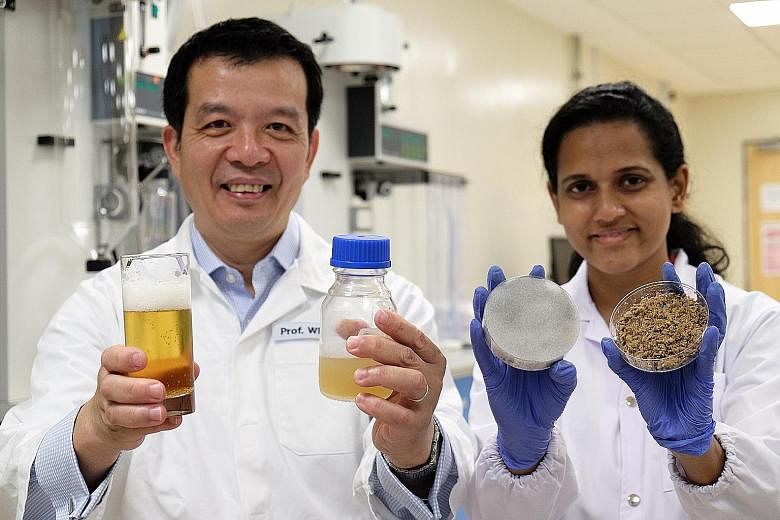What better way to use spent brewery grains then to reuse them to brew even more beer?
Nanyang Technological University (NTU) researchers have developed a technique to do just that by making use of microorganisms.
Adding the food-grade microorganisms to spent grains left behind during the beer-brewing process produces a substance that yeast - a crucial ingredient needed to make beer - can grow on.
Yeast is key in fermentation, a process where sugars from the grains are converted into alcohol.
Said Professor William Chen, director of NTU's Food Science and Technology Programme, on day (Aug 29): "About 85 per cent of the waste in brewing beer can now be turned into a valuable resource, helping breweries to reduce waste and production cost while becoming more self-sustainable."
Every 5 litres of beer produced creates 1kg of spent grain, which is usually used as compost or animal feed.
But the NTU technique is able to turn the by-product into a liquid nutrient to grow yeast instead, which will be cheaper than buying commercial liquid nutrients, which cost about US$30 (S$40) per litre, said Prof Chen, who led the development effort.
The team can produce the liquid nutrient at about 20 per cent of the cost, he added.
In the NTU technique, the microorganisms used break down plant fibres called lignin, which are left behind when barley or hops grains are stripped of sugars, protein and nutrients after fermentation.
Once broken down into smaller, nutritious pieces, they are mashed and turned into a liquid, which was found by the NTU team to be easily digestible by yeast.
A paper on the research findings was published recently in scientific journal AMB Express.
Several international beverage companies, including Asia Pacific Breweries (APB) in Singapore, have expressed interest to leverage on the NTU technology, said Prof Chen, who added that he is in talks with several of them to license or commercialise the technology.
Mr Mitchell Leow, head of corporate affairs at APB Singapore, said: "This research is a testament to how science and innovation enable companies to find novel ways to be more sustainable in their operations."
Over 193 billion litres of beer are produced worldwide each year - enough to fill 77,000 Olympic- sized swimming pools. This generates some 39 million tonnes of spent grain.
Associate Professor Xu Rong, interim chair of NTU's School of Chemical and Biomedical Engineering, said the burgeoning global population increasingly strains conventional food sources, so there is a need to innovate new foods and processes to alleviate the increasing demand. "By upcycling waste into usable nutrients, conventional resources used to grow yeast can now be diverted to the production of wholesome foods," she said.
Brewer Ross Goh, 30, who runs Rye & Pint Brewing with his brothers, said: "The idea of converting spent grains into yeast nutrients... also helps improve the cost-efficiency of a brewery's operations in terms of a somewhat self-sustaining model."

